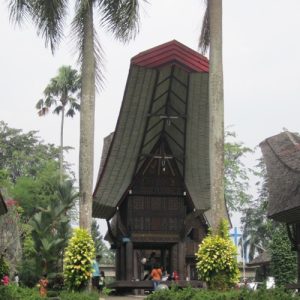Exploring the Wonders of Technology
Located in the vibrant state of Gujarat, India, Rani Ki Vav stands as a breathtaking testament to India’s rich history, culture, and architectural brilliance. This ancient stepwell, also known as the Queen’s Stepwell, is more than just a historical monument; it’s a magnificent work of art and engineering that continues to awe visitors from all around the world. Designated as a UNESCO World Heritage Site in 2014, Rani Ki Vav offers a glimpse into the sophistication of medieval Indian architecture and is a must-see for anyone exploring the treasures of Gujarat.
A Journey Back in Time
Built in the 11th century during the reign of King Bhimdev I of the Solanki dynasty, Rani Ki Vav was commissioned by his queen, Udayamati, in memory of her late husband. The structure’s design is a combination of utility and beauty, serving as a functional water reservoir while also functioning as a stunning architectural marvel. Originally intended to provide water during periods of drought, this stepwell is an exquisite example of India’s engineering genius in ancient times.
As you approach Rani Ki Vav, its magnificence becomes immediately apparent. The sheer scale and intricate details of the monument take you back to an era of grandeur and devotion. The well is a multi-story structure, built deep into the ground, with a series of beautifully designed steps that lead down to the water level. The walls of the well are adorned with hundreds of intricately carved sculptures depicting deities, mythological figures, and everyday life, making it a veritable open-air museum of art and culture.
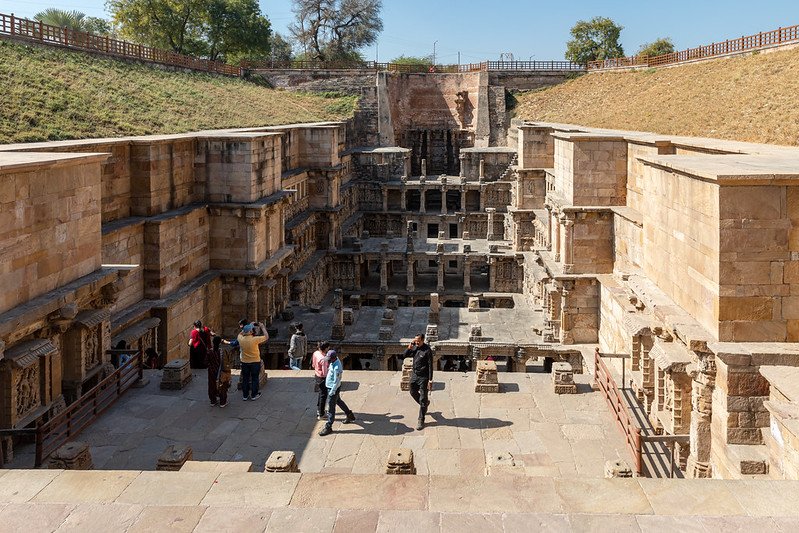
Image by: https://www.flickr.com/photos/ninara/
A Feast for the Eyes: Architecture and Carvings
One of the most striking features of Rani Ki Vav is its remarkable carvings. The stepwell’s walls are lined with over 800 intricately carved sculptures and statues, many of which are dedicated to Hindu deities such as Vishnu, Shiva, and Lakshmi. These figures are not just decorative; they tell stories of mythological lore, and each sculpture is a masterclass in detail, from the delicate folds of clothing to the expressive faces of the figures.
The structure itself is a fine example of the Solanki architectural style, characterized by elaborate ornamentation and precision engineering. The stepwell is arranged in a symmetrical manner, with a central shaft and multiple levels of galleries supported by columns. The stepwell is divided into seven levels of stairs, the deepest of which is the fourth level, which leads into a rectangular tank. Each level offers a new set of sculptures and an ever-changing perspective of this awe-inspiring structure.
The artistry of the carvings makes Rani Ki Vav a true visual feast. Visitors will find themselves mesmerized by the graceful depictions of celestial dancers, gods, and goddesses, each contributing to the stepwell’s unique beauty. The well’s architecture is designed to provide shade and coolness, making it a refreshing escape during the hot Indian summers.
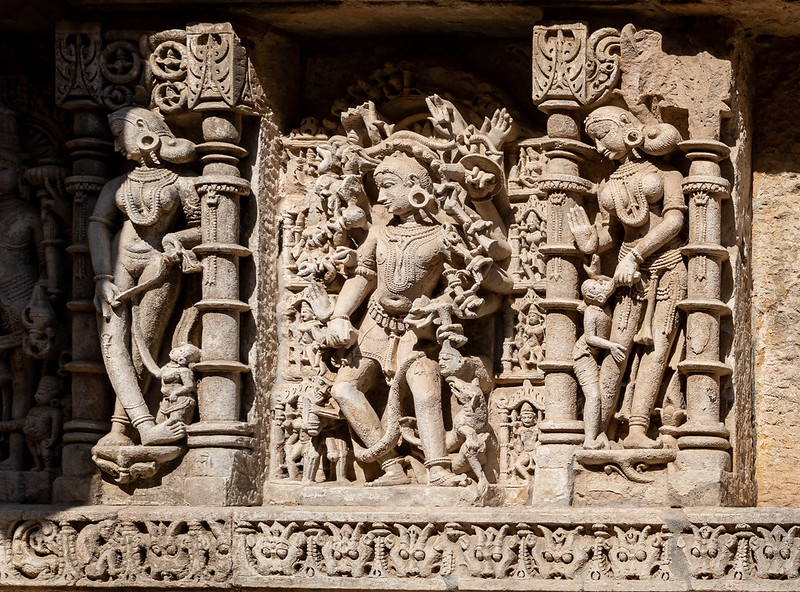
Image by: https://www.flickr.com/photos/ninara/
A Symbol of Water Conservation
Beyond its artistic and architectural significance, Rani Ki Vav is also an extraordinary example of ancient water management. The stepwell was built to store water through a clever system of steps and chambers. This allowed for easy access to clean water, particularly in the arid region of Patan, where Rani Ki Vav is located.
The lowest levels of the stepwell itself are no longer accessible to visitors, but the surrounding galleries and steps still provide a glimpse into how people would have once used this marvel of ancient engineering. The stepwell’s deep, narrow design ensured that the water remained cool even in the harshest of summers, making it an essential resource for the local population.
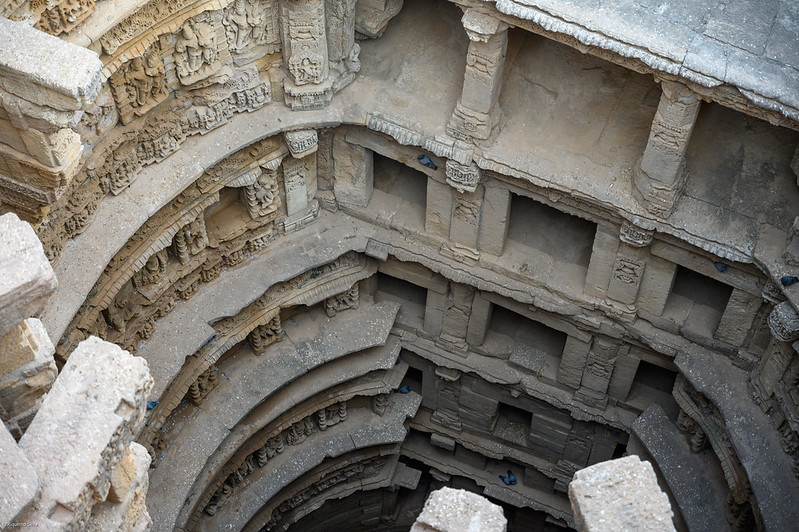
Image by: https://www.flickr.com/photos/xiquinho/
A Must-Visit Destination in Gujarat
Visiting Rani Ki Vav isn’t just a trip through history — it’s also an opportunity for reflection.
The stepwell’s significance is not limited to just its physical beauty. The monument serves as a symbol of devotion, built to serve the needs of the community while also standing as an enduring monument to the Queen’s love for her late husband.
Rani Ki Vav is undoubtedly one of the most remarkable and unique sites in India. Whether you’re a history fan or an architecture enthusiast, or simply someone who appreciates beauty, a visit to this stunning stepwell is well worthwhile.
Visitors can easily reach Patan from Ahmedabad, which is about a 2-3 hour drive away, making it a great day trip or part of a longer exploration of Gujarat. The site is well-maintained, and there are plenty of guides available to explain the fascinating history and architecture behind the stepwell.
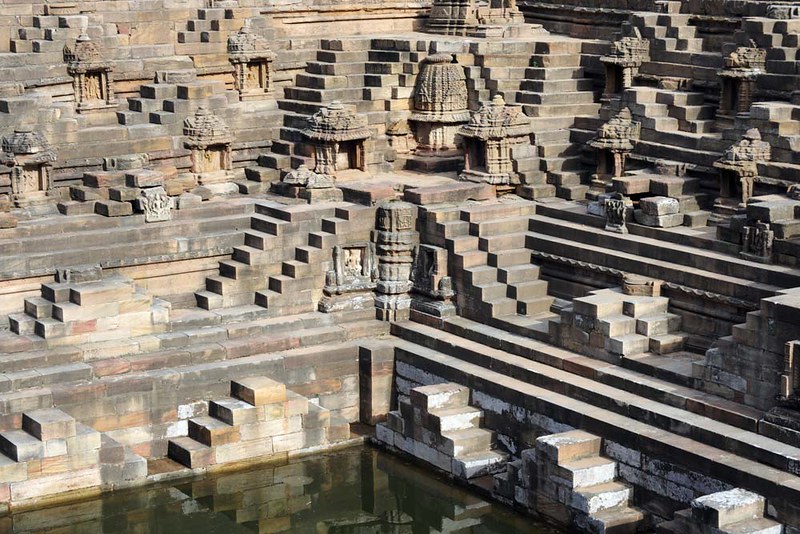
Image by: https://www.flickr.com/photos/scottishgovernment/
Wrap Up
Rani Ki Vav is not just a monument — it’s a piece of history that continues to inspire wonder. Rani Ki Vav offers an unforgettable experience for all who visit. If you’re looking to explore the rich cultural tapestry of India and witness an extraordinary feat of engineering and artistry, Rani Ki Vav in Gujarat should undoubtedly be on your travel list. It’s a timeless masterpiece that will leave a lasting impression long after your visit!
Heading Image: https://www.flickr.com/photos/ninara/



